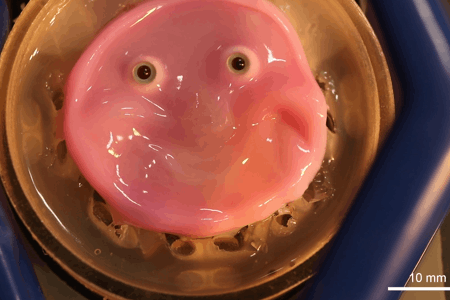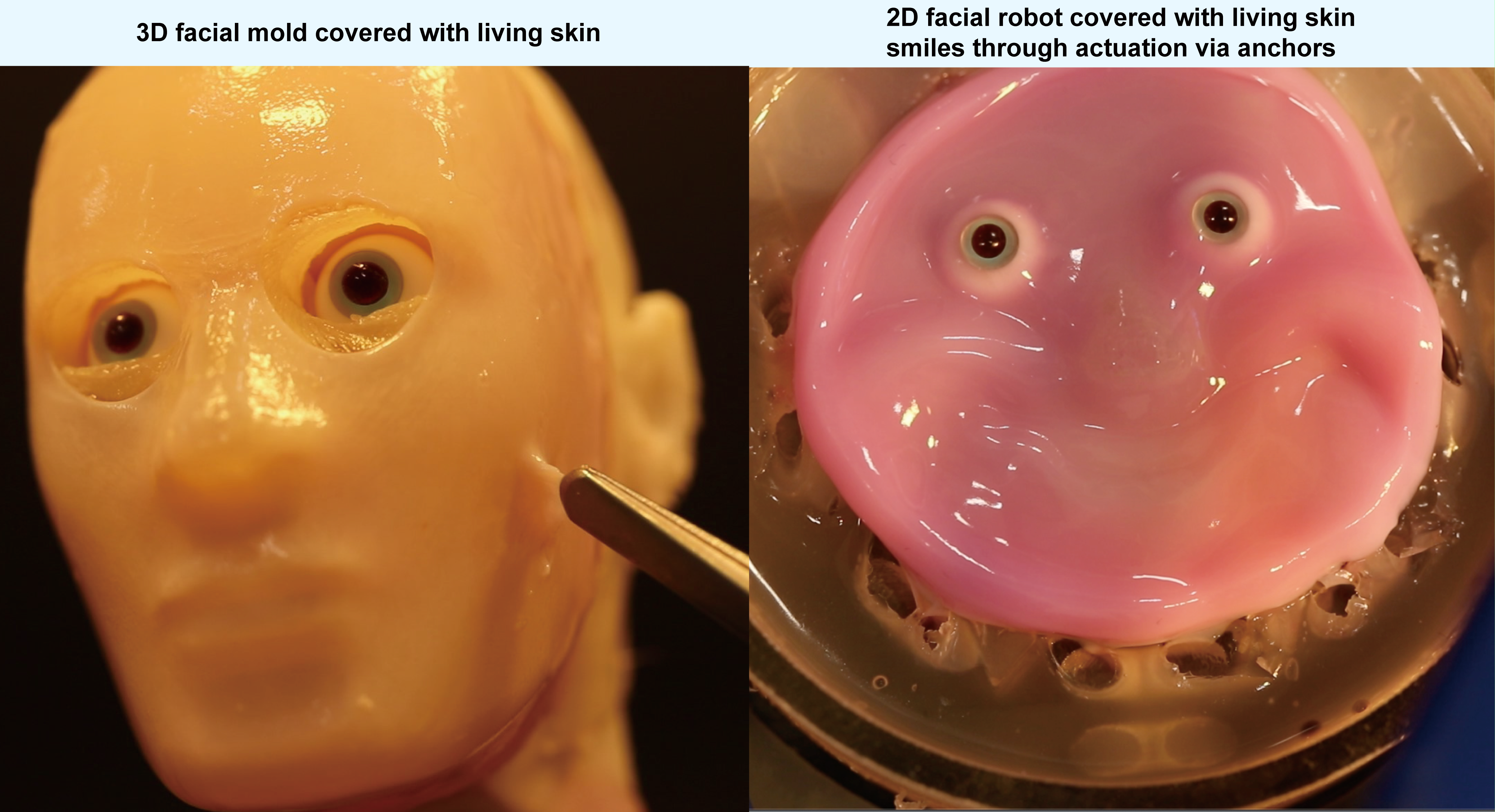Researchers at the University of Tokyo have made a significant breakthrough in biohybrid robotics by developing a novel technique for attaching engineered skin tissue to humanoid robots.
Professor Shoji Takeuchi led this innovation, which could pave the way for robots with enhanced mobility, embedded sensing capabilities, self-healing properties, and a more realistic appearance.

The key to this advancement lies in the design of perforation-type anchors inspired by the structure of human skin ligaments. These anchors allow for secure attachment of the skin equivalent to the underlying robotic structure, overcoming the limitations of traditional protrusion anchors. By mimicking the skin-ligament interface, the researchers have achieved a less restrictive placement of the anchors while maintaining the robot’s aesthetic integrity.

To ensure optimal adhesion, the team employed a water-vapour-based plasma treatment to enhance the wettability of the device surface and facilitate the penetration of collagen gel into the anchors. Validation experiments confirmed the improved wettability and the successful infiltration of collagen into the anchor’s interior, even under challenging conditions with high-viscosity collagen solutions.
The effectiveness of the perforation-type anchors was rigorously evaluated through contraction tests and tensile tests. The results demonstrated that the anchors could successfully restrain the contraction of the dermis equivalent and provide strong adhesion, with larger anchor diameters correlating with increased tensile strength. Finite element method simulations further revealed the importance of anchor number and arrangement in balancing tensile strength and permissible skin deformation.
To showcase the versatility of the anchoring method, the researchers applied it to two distinct applications. First, they constructed a 3D facial mould with a skin equivalent, demonstrating the ability to cover complex 3D objects with intricate contours. Second, they developed a robotic face with a dermis equivalent capable of generating smiling expressions through the selective actuation of the skin via the perforation-type anchors.
This research opens up exciting possibilities for robots with self-healing capabilities and sensory functions. The use of living skin offers the potential for regeneration through cellular proliferation without the need for external triggers. However, challenges remain in achieving uniform skin thickness on facial models due to variations in contraction forces on concave and convex surfaces.
The implications of this work extend beyond robotics, with potential applications in the cosmetic industry and surgical training. By leveraging this model to study wrinkle formation mechanisms, researchers can enhance their understanding of skin ageing and develop novel cosmetic products. Additionally, the ability to recreate facial expressions on a chip could provide valuable insights for plastic surgery and treating conditions such as facial paralysis.
The development of perforation-type anchors and the successful attachment of living skin to robotic surfaces mark a significant milestone in biohybrid robotics. This research, led by Professor Takeuchi and his team, lays the foundation for humanoid robots with improved functionalities and a more lifelike appearance. As the technology continues to evolve, it holds promise for many applications, from cosmetics and surgical training to developing advanced humanoid robots capable of seamless interaction with humans.
TLDR:
- Japanese researchers developed a novel technique to attach engineered skin tissue to humanoid robots using perforation-type anchors inspired by skin ligaments.
- Plasma treatment enhances collagen penetration into anchors, ensuring secure attachment.
- Contraction tests, tensile tests, and FEM simulations validate the effectiveness of the anchoring method.
- Applications include a 3D facial mould covered with skin equivalent and a robotic face capable of smiling expressions.
- The research has implications for self-healing robots, the cosmetic industry, and surgical training.
